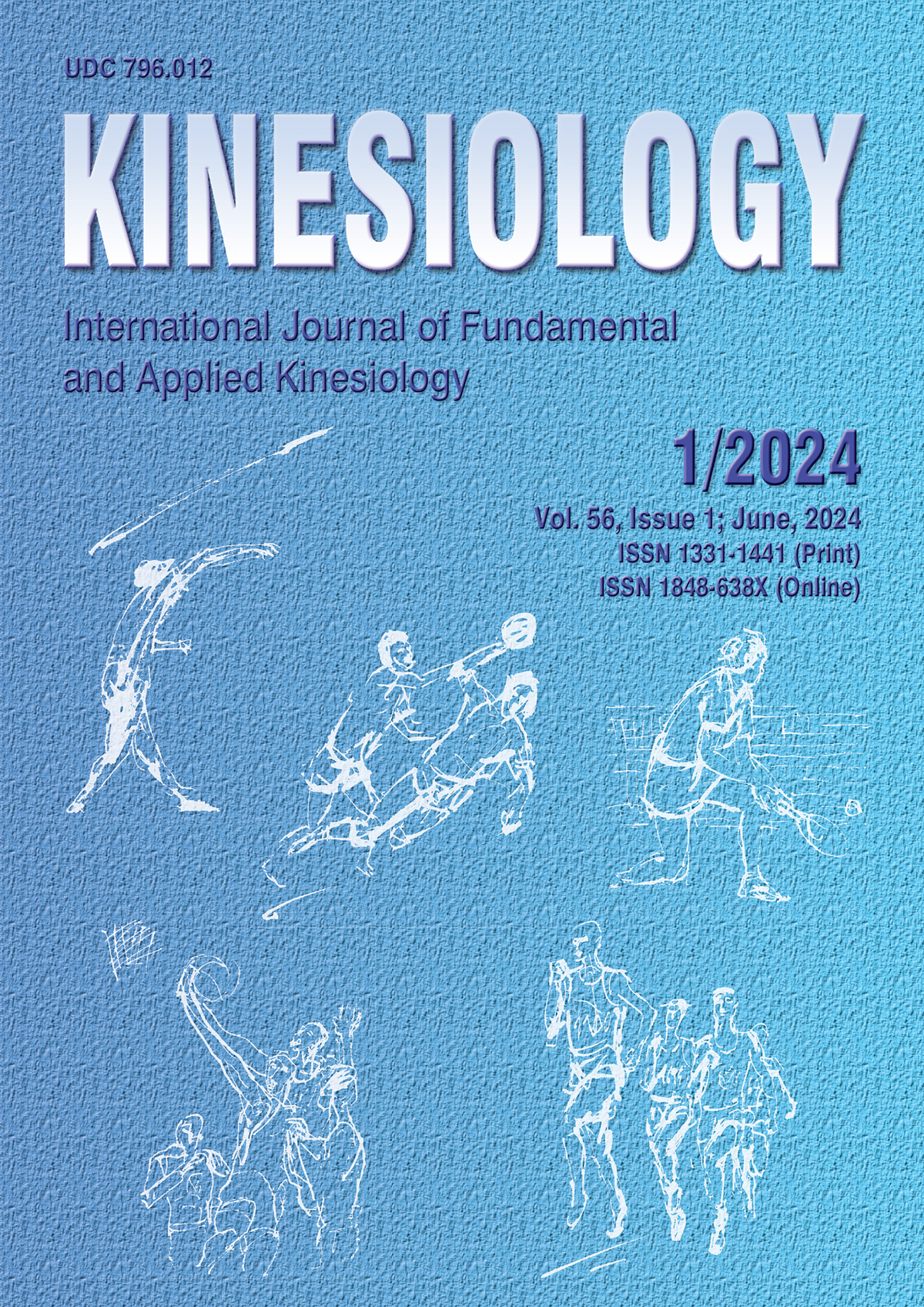TRAINING LOAD AND PLAYERS’ READINESS MONITORING METHODS USED IN VOLLEYBALL: A SYSTEMATIC REVIEW
Abstract
Monitoring workloads during training and competition and players’ readiness seems to be key to increasing performance, reducing injury incidence and avoiding overtraining. We systematically reviewed the methods used to measure workloads and athletes’ readiness in volleyball to help coaches make the best decision when selecting monitoring methods. Databases Web of Science, Scopus, SPORTDiscus and PubMed were searched from inception to the 21st of February 2022. All peer-reviewed original research in English, Spanish, Portuguese and Italian, longitudinally monitoring loads and athlete readiness in indoor volleyball team settings of any level, gender and age were included. The quality of evidence was evaluated with a modified risk of bias assessment used in previous research by Castellano et al. (2014). This study has been registered in PROSPERO ID CRD42022316313. Out of 1774 records identified, 78 were screened of which 55 full texts were added for systematic review. For internal workload, the session rating of perceived exertion (sRPE) seems to be the “golden standard” used from 2010 to 2022 across all the studies. External workload has mainly been researched through quantified jumps. Even with technological advances and the introduction of microsensors in 2017, the use of video analysis is still present nowadays. Players’ readiness studies mainly used the total quality recovery scale (TQR) and wellness questionnaires in most research. New technological advances offer coaches more extensive and real-time data on external load. However, the use of the sRPE, TQR/WB, CMJ would create a monitoring system sufficient for teams at developmental stages and are of a reduced cost.
Keywords: workload, monitoring methods, wellness, readiness, performance
Downloads
Published
How to Cite
Issue
Section
License

This work is licensed under a Creative Commons Attribution-NonCommercial 4.0 International License.
At Faculty of Kinesiology we recognize that access to quality research is vital to the scientific community and beyond. Kinesiology is non-profit journal and all costs of publishing and peer review process are covered by the publisher itself or other funding sources like Ministry of Science and Education of the Republic of Croatia. Full text papers are also available free of charge at http://hrcak.srce.hr/kineziologija. There are no restrictions on self archiving of any form of paper (preprint, postprint and publisher's version).
Articles are distributed under the terms of the CC BY - NC 4.0
Kinesiology does not charge any fees to authors to submit or publish articles in our journal.


